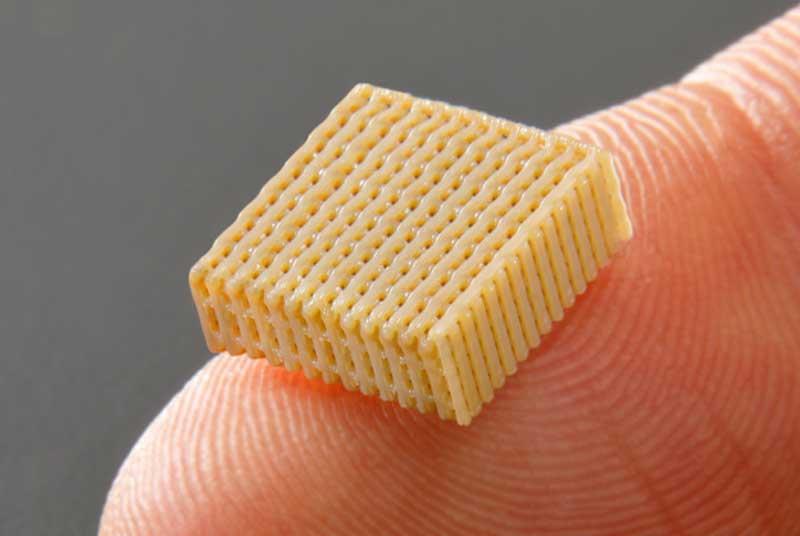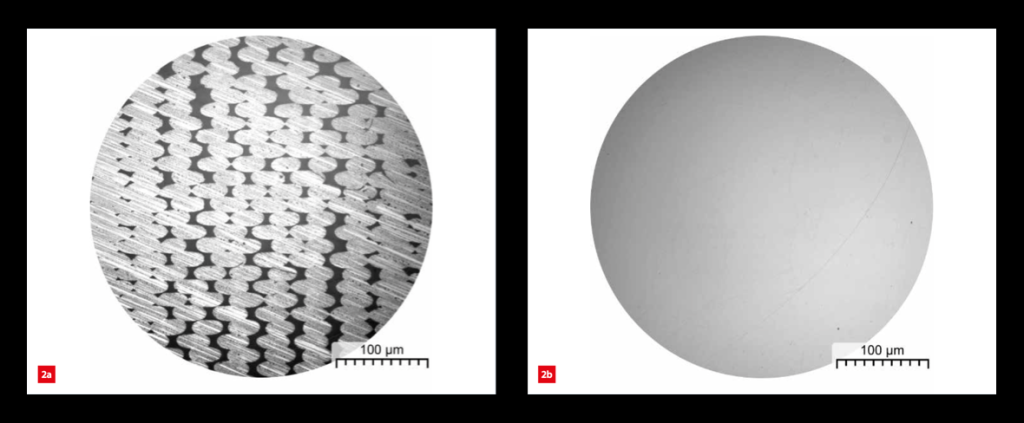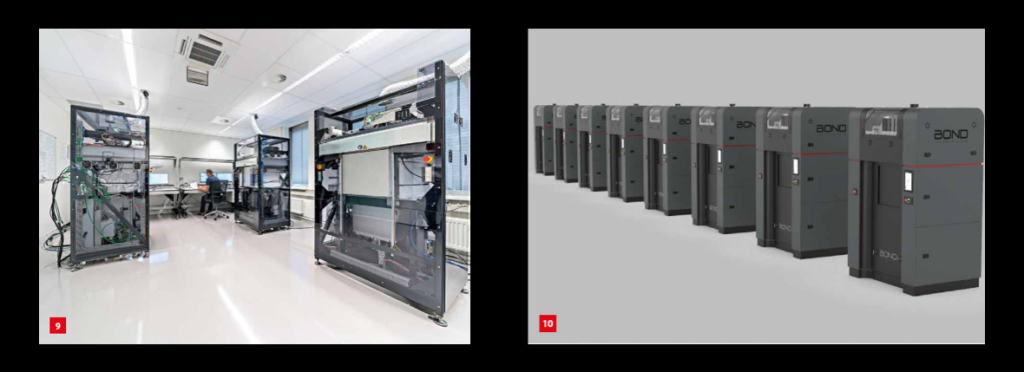China3D printingFounded in 2014, BOND3D claims to be the first company in the industry to be able to 3D print functional end-use parts using high-performance polymers such as PEEK without losing the inherent properties of the material.
Unlike traditional FFF, Bond3D’s patented technology is a pressure-controlled extrusion process that reportedly prints filaments with a final part density of over 99%. The resulting isotropic parts retain the bulk properties of their base materials, much like parts produced by injection molding.

3D printed Victrex PEEK sample made using Bond 3D technology. Photo via Bond3D.
3D printingProblems with PEEK
PEEK is one of the best known thermoplastics in the PAEK (polyaryletherketone) family of high performance polymers. Combining high strength and biocompatibility with chemical resistance and excellent thermal stability, this versatile material can be used in virtually every critical industry.
Unfortunately, PEEK is notoriously difficult to 3D print while maintaining its mechanical properties. Due to the circular shape of traditional print nozzles, the contact area between adjacent extruded PEEK layers is often limited. This causes voids to form within the part, which means that 3D printed PEEK components are consistently less dense than their bulk material counterparts.
According to Bond3D, traditional PEEK 3D printers typically only achieve part density around 85%, resulting in reduced strength in the z-direction.

Microstructure of a 3D printed part using conventional FFF (left) and Bond 3D technology (right). Image via Bond 3D.
Void-free 3D printing with Bond3D
Bond3D’s technology claims to solve this problem, but how does it work? Essentially, the pressure-controlled printing process is designed to squeeze the material until all the voids between the previously printed lines are filled. The system ensures that the material continues to flow until the pressure in the molten pool directly below the nozzle exceeds a certain threshold – created by the upward force exerted on the nozzle itself. Once the threshold is crossed, the previous layers are fully bonded together and no more material needs to be extruded.
This pressure feedback system was initially determined by examining the motor current required to drive the extruder, but the Bond3D team found this to be imprecise. The company eventually turned to a sensitive force sensor-based implementation, in which the printhead is mounted on a frame via a flex-based, frictionless, and lag-free assembly.
The company said it was able to make parts with “nearly no” microstructural voids and a part density of over 99 percent. Internal testing of the printed specimens showed a yield strength of 99 MPa and a gas pressure range of 115 bar for a wall thickness of only 1.4 mm. In addition to enhancing the mechanical strength of printed PEEK parts, this also has a major impact on their fluid transport properties, which are critical for any type of piping or manifold assembly.
Bond3D, which received a multi-million euro investment from UK-based polymer developer Victrex back in 2019, is now ready to bring its technology to market after developing eight production-ready systems this year. The list of potential use cases covers all key applications from aerospace and automotive to medical implants and electronics.

As of this year, Bond3D has developed the first production-ready 3D printer. Photo via Bond3D.
Formnext 2021 is a great opportunity for startups to showcase the innovations they have been working on for years. Berlin-based 3D printing technology developer Quantica has announced the launch of its first 3D printer at the trade show. The T1 Pro is an industrial grade material jetting system based on the company’s extreme viscosity jetting process. The system is designed for high-performance multi-material printing using ultra-high viscosity resin combinations – an unsolved niche for inkjet-based 3D printing.
Arburg’s InnovatiQ subsidiary, a specialist in silicone 3D printing, also unveiled its latest silicone 3D printer, the new LIQ 7, on the show floor.Based on the company’s Liquid Additive Manufacturing (LAM) technology, the LIQ 7 will reportedly bethe first timeRealize full color3D printingSilicone parts.
China3D printingNet compilation!
(Editor in charge: admin)


0 Comments for “BOND3D achieves 99% part density using void-free PEEK 3D printing technology”